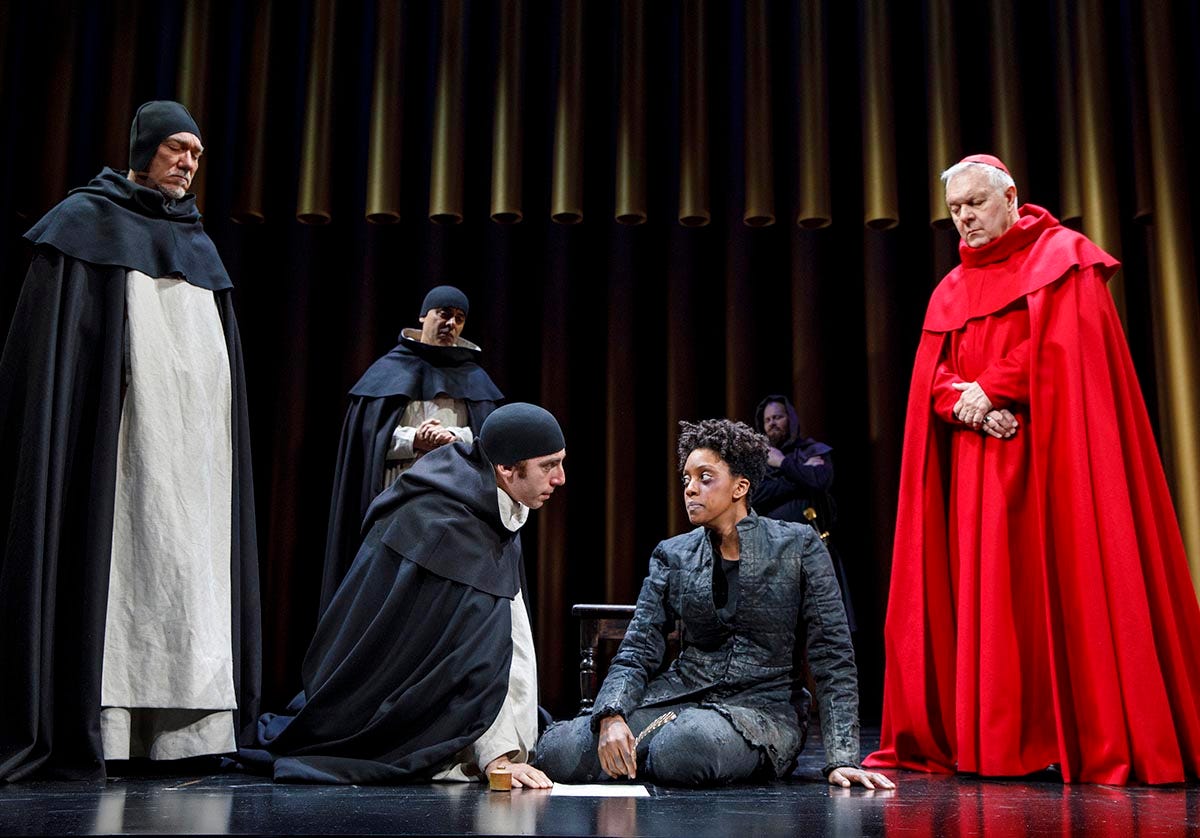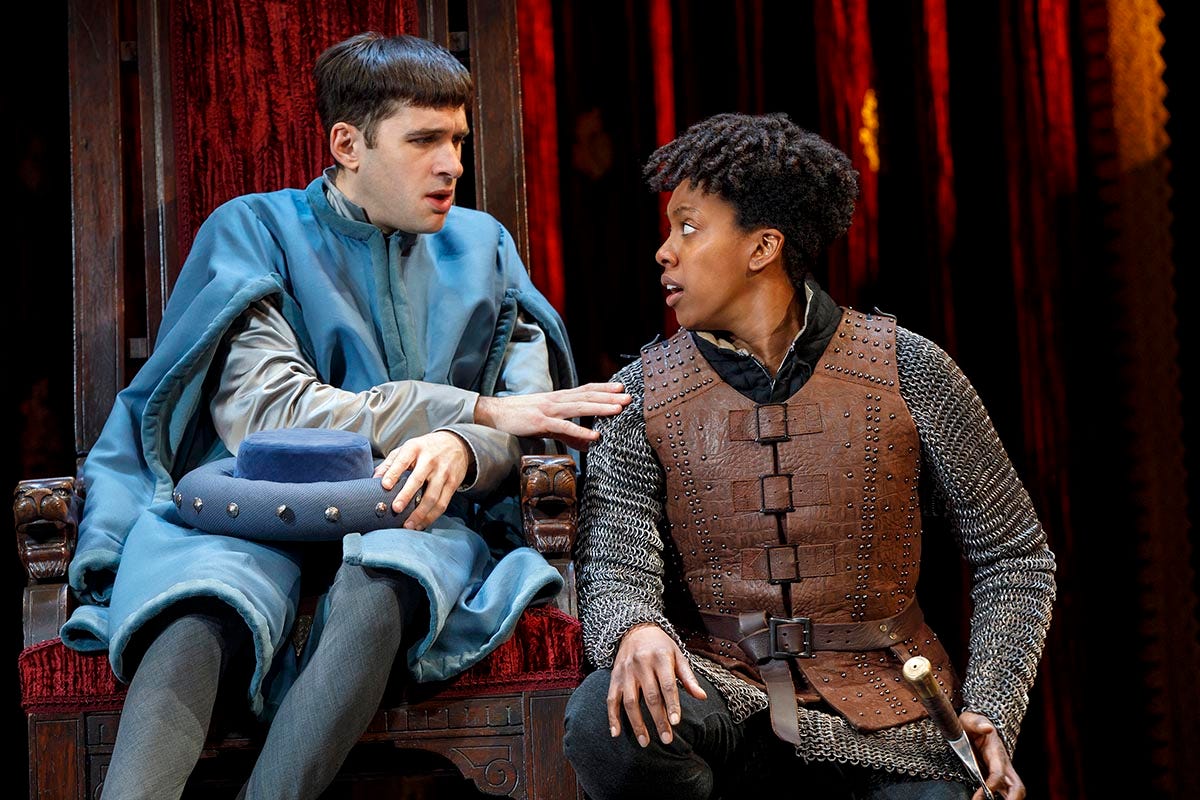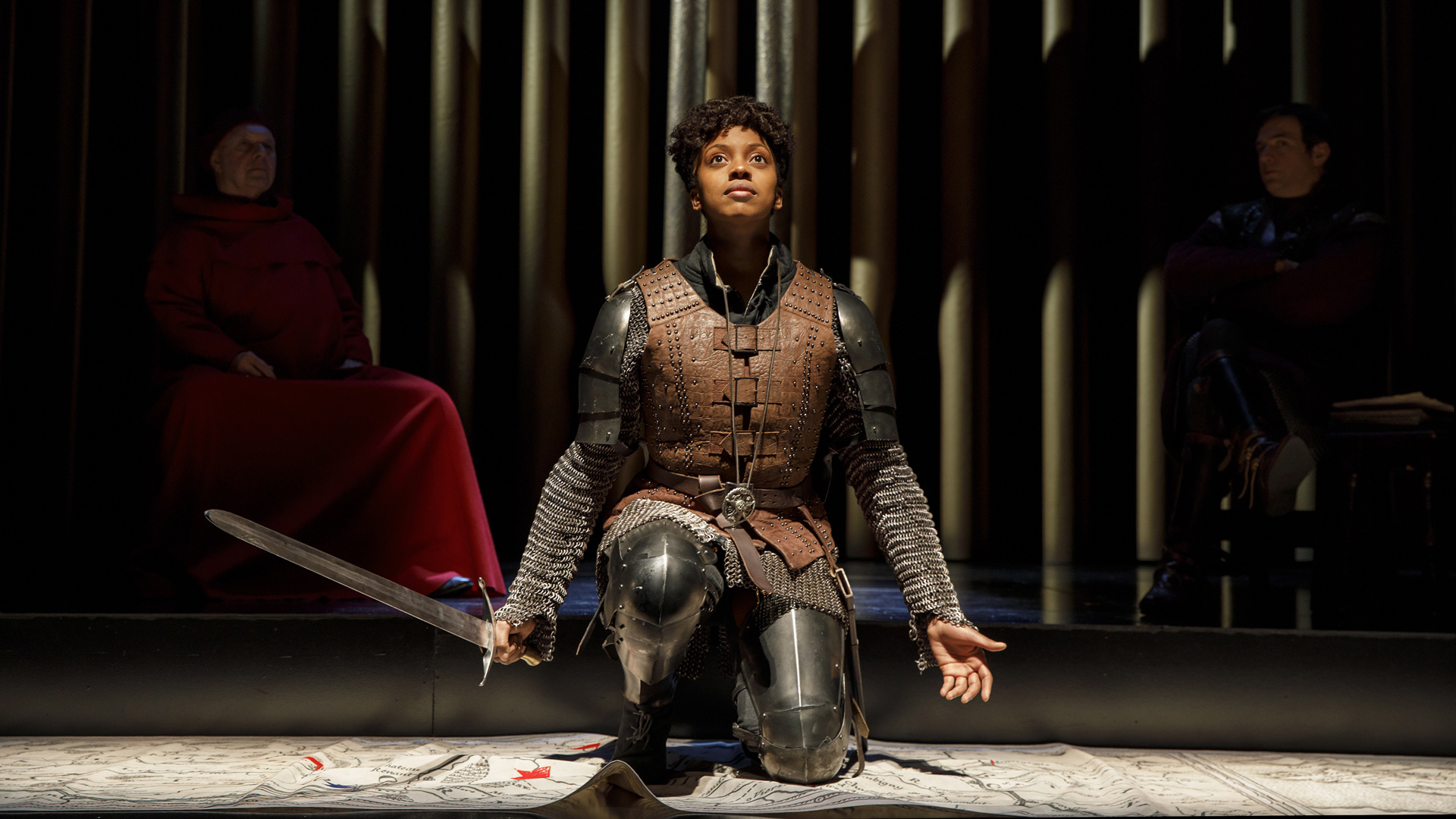After “Ruined,” “The Trip to Bountiful,” “Romeo and Juliet” and last season’s “A Doll’s House, Part 2,” (not to mention three Tony nominations) the time has finally come for Condola Rashad to take center stage, to be a leading lady, to have all eyes on her. Broadway has been waiting far too long for this moment. Condola Rashad is a star, and now she is right where she belongs, at the center of Daniel Sullivan’s revival of “Saint Joan” at the Freidman Theatre, which opened on Wednesday.
George Bernard Shaw, who although long dead is lucky enough to have inspired two pieces currently on Broadway, wrote that in “Saint Joan” there are no villains; there is Joan the Maid, and there is everyone else. This 1923 historical play concerns Joan of Arc, her attempts to help France with the Hundred Years War, and the Catholic Church’s eventual trial and execution of her for heresy. Thus, for most of the piece, we are in the year 1429, exploring castles, battlegrounds, and churches.
Thankfully a sumptuous set by Scott Pask and transformative lighting by Justin Townsend made the piece feel chic, modern, and relevant. The space is framed with giant gold pipes, reminiscent of an inverted organ, which gave the world a Medieval tone without feeling like a stale period piece. That same cannot be said of Jane Greenwood’s costumes, which look like an overly colorful set of rented pieces from an old “Pippin” or “Once Upon this Mattress” production; a rare miss for such an iconic designer.
Despite the inconsistent design of the piece, Sullivan’s production was otherwise refined, choosing to focus more on the characters and the personal conflicts than on the confusing historical details (which include a disinherited French heir, a randomly powerful English duke, clergymen with complex titles, and a lot of talk about Burgundians). This approach strengthened the production overall, allowing the actors to shine and the audience to focus on character development instead of the progress of a complicated war.

Other than the magnificent Condola Rashad, the production was made up almost exclusively of men, playing powerful aristocrats, priests, soldiers, and monarchs fighting over whether Joan was a visionary or a lunatic. Patrick Page begins the piece (and the battle) as Robert de Baudricourt, the first man swayed into believing Joan and giving her men’s armor to wear.
Daniel Sunjata plays Dunois, an army commander who although reticent eventually becomes one of Joan’s fiercest advocates, letting her lead the army into a crucial victory at Orleans. Sunjata gives a touching performance seemingly deeply affected by Joan’s words.
Perhaps the most notable — an important — fan of Joan’s is heir to the throne, and eventual King Charles VII, played by the loveable Adam Candler-Berat. His interpretation of the Dauphin is childish, naive, and spoiled, but ready to lead his country and very open to the mysticism of Joan. Other than the stupendous Rashad, Berat is the next most praise worthy performance; he crafts a character that feels so complete, so unburdened by the complicated historical world of the play.

The opposite team is led by Jack Davenport who plays the Earl of Warwick, the English aristocrat who began the war against Joan, aided of course by the Bishop of Beauvais, Cauchon (played by Walter Bobbie). Sadly this pair of otherwise accomplished actors have two lengthy scenes without Joan. In this play, a scene without Joan is one without interest. But in this production, a scene without Condola Rashad is a scene not worth watching. Thus, the two long instances of scenes without her often drag, making the play feel rather endless, which is somewhat unfortunate because it mars the performances of Davenport and Bobbie, who audiences will remember as the boring guys who talked while we waited for Rashad to come onstage again.
That being said, it is necessary to note that the play suffers from some minor pacing issues, which are the direct cause of Rashad’s extraordinary talent. When she is not onstage, the audience is (rightfully) unhappy, and each moment of stage time without her is merely a moment of distraction, waiting for her to make a glorious return.
In a magical realist epilogue, a post-execution Joan visits the now elderly King Charles VII’s dream and is joined by Dunois, Warwick, Beauvais, and a man who gave her a cross made of sticks while she was being burned to death. While all snuggling in a bed, a message is delivered from the Vatican: 489 years after her death, Joan was made into a saint.
Just like her character, Condola Rashad has become a saint in this almighty production; “Saint Joan” is her apotheosis.






